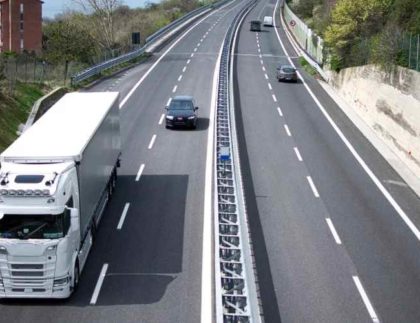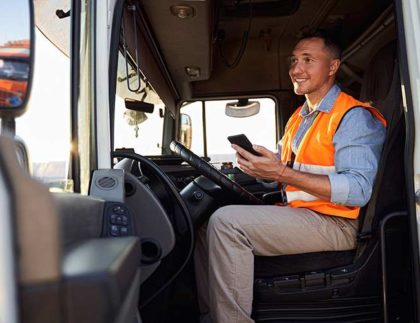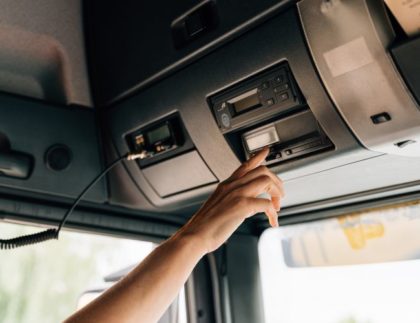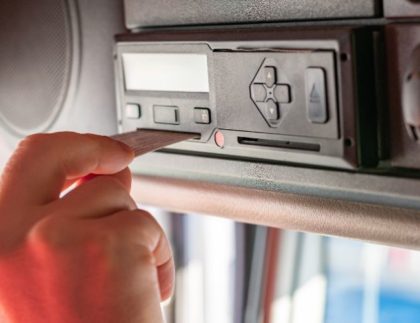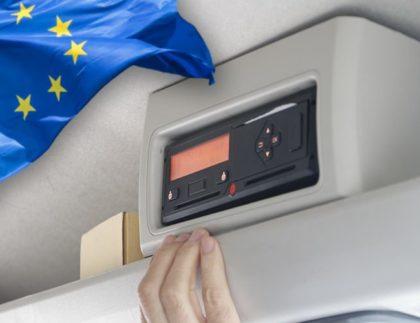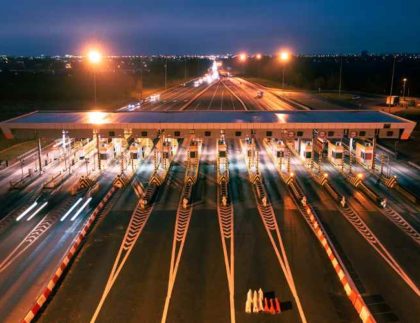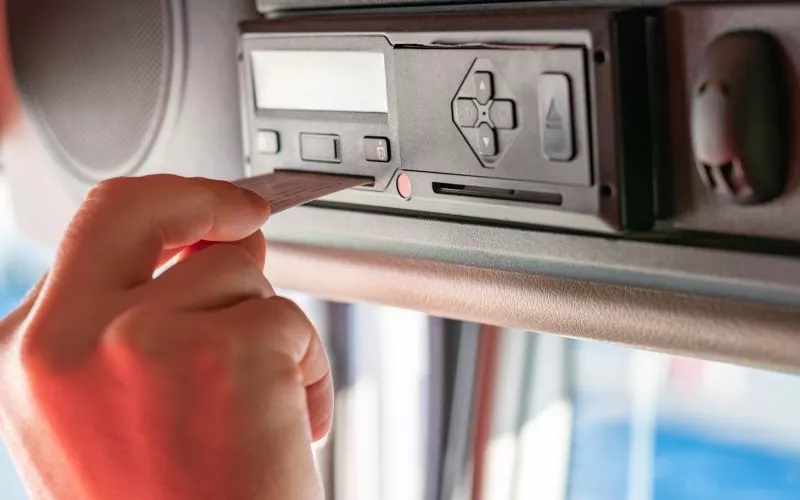

Since recently, the installation of the newest version 2 smart tachographs, which are to become a standard equipment in all vehicles intended for international routes from August 2025, has been mandatory for newly registered trucks. Although the version 2 smart tachographs with their new functions – automatic border crossing recording and loading and unloading recording – were supposed to provide convenience for transportation companies, it may be a bit different in practice. Why? The newest tachograph version does not record all data on the driver cards used until now, but only on the new driver cards issued since 21 August this year. This can expose the carriers to penalties and cause difficulties with settling the drivers’ remuneration. What can companies do to avoid problems before official explanations in this matter are issued? What additional information does the newest generation of cards have, and would card replacement to the newest version be a solution for carriers? Mateusz Włoch, Development and Training Expert, Inelo, Eurowag Group, provides answers to these questions.
Tachograph driver card – what is it?
As a reminder, a tachograph driver card is a document for recording all of the most important information on a driver’s work, and it is usually issued for five years. It can be used for driver’s identification, as it holds their personal data (name, surname, date of birth, personal identification number, driver license number, chip recording the data received from a tachograph). One driver can own only one active card individually assigned to them. More importantly, the driver card provides inspection agencies with a lot of necessary data, which allow to determine whether the driver has complied with the laws on, for example, drivers’ working time, including also information on the country of beginning and ending their work or inspections during the carriage. A tachograph card also informs about the distance driven by a driver on a specific day and the vehicle odometer reading.
– You should remember that a driver card records the data from at least the last 28 working days, which means that it should be read at least once during this time. Sometimes the activity data is stored on a card for more than one year, but the memory for recording countries is a lot smaller. In practice, the card data is downloaded twice per month – once at the beginning of a month, for the purposes of settlement, and then the second time in order to fulfil the obligation to download it at maximum every 28 days. The driver card data is also downloaded when the card validity expires, an employee changes their workplace or inspection bodies request the data to be provided. Remote data download systems, such as GBox, are currently verry popular. In their case the card data is downloaded even every few days, stressed Mateusz Włoch, Development and Training Expert, Inelo from the Eurowag Group.
Additional functions of the newest driver cards (G2V2)
Two generations of tachograph cards had been available on the market until recently. The first card type (G1) was issued until June 2019. These cards do not have a section to record the vehicle location every three hours of driving. The second card version (G2) has been manufactured since June 2019. It has space for saving the position of a truck or bus, but it lacks sections to record loading and unloading operations, as well as automatic border crossing, which is quite problematic.
The new tachograph cards (G2V2) are not different from the G2 version visually, but their memory is larger by as much as 85 percent.
– A lot more data will be recorded on the new driver cards than on their previous versions. This card type allows to record loading and unloading operations, as well as automatic border crossing. It should be added that the number of days subject to on-road inspection will also be increased from the end of 2024. A larger card memory is necessary, because this period will be as much as doubled, which means that inspectors will check a particular driver’s activity not from 28 days, but from as many as 56 days, comments Mateusz Włoch, Eurowag Group Inelo Expert.
Some data missing from the driver cards
In accordance with the updated EU Regulation 165/2014, the drivers who use the new smart tachographs (G2V2) are not obliged to manually enter border crossings. This information is automatically recorded both in the tachograph memory and on driver cards, but not on all of them. These events are only recorded on the driver cards of the newest G2V2 version, that is the ones issued only after 21 August 2023.
– It was assumed that the previous driver card versions would be compatible with the newest version 2 smart tachographs and vice versa. The cards with the new microprocessor were supposed to work with previous generation tachographs, so the carriers would not have the obligation to replace them. And so it is, but not entirely, as the new tachograph tests conducted by Inelo experts indicate that if a driver has a driver card issued earlier (G1 and G2V1), the data on border crossing and loading and unloading operations will not be automatically recorded on the cards, which can lead to serious consequences for transportation companies. Missing information on border crossings may result in inspection agencies imposing a penalty on the company. The carriers can also have difficulties with drivers’ remuneration settlements, as the information on border crossings is necessary to calculate the so-called virtual per diems, that is allowances to which international transport drivers are entitled, says Mateusz Włoch, Eurowag Group Inelo Expert, adding that the matter is even more complicated when it comes to the loading and unloading operations. The necessity for them to be manually entered by drivers may raise concerns, as there are no appropriate legal provisions for that at the EU level.
Temporary solution for transportation companies
Due to the fact that these difficulties have appeared rather recently, we do not know the official explanations in this matter yet. What can the transportation companies do then to operate in compliance with the laws?
– We recommend that the drivers continue to manually enter border crossings, which means stopping on the border or right after crossing it and entering the country in the tachograph. This is the safest way to obtain all data at this moment. This applies to situations where a driver drives a car with the newest smart tachograph generation and has a driver card issued before August 2023. If the driver fails to manually enter border crossings, and then changes the vehicle and is stopped for inspection, the inspection agencies will not be able to determine the type of the tachograph used in the previous vehicle based on data downloaded from the card and they will not have the information on the borders crossed by the driver. Please note that replacing the card with the newest version will also not be a viable solution for carriers, as appropriate procedures for this are still missing at the domestic level. A driver card can be replaced only if its validity is close to expiry or if it has been stolen, damaged or lost, as well as if the driver’s personal details, such as residential address, have changed. There is no procedure which would allow for a card to replaced for the reason of wanting to have its newer version, comments Mateusz Włoch, Eurowag Group Inelo Expert.
Other challenges related to smart tacho GV2V
It can be said that the current tachograph replacement poses a greater challenge for the carriers than the one which took place four years ago, and it involves greater costs for transportation companies. Carriers may encounter a situation where tachograph replacement will be temporarily impossible. As of now, there is a shortage of such devices on the market and the replacement must be completed in all international transport vehicles in less than two years. The situation is even more difficult for the carriers who experience a failure of the G2V1 version tachograph installed in their vehicle – the laws require the workshops to install only the newest generation of tachographs. Such a situation may mean that the vehicle needs to be removed from traffic for many days and, consequently, can result in financial loses for the company.


